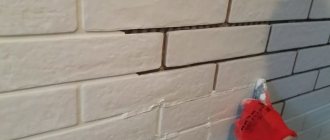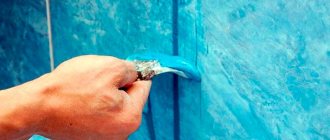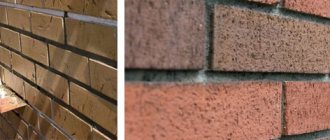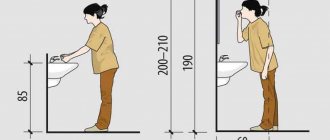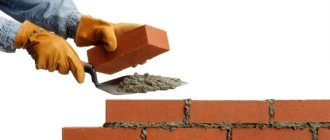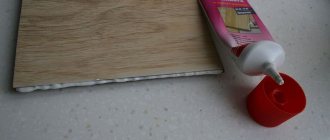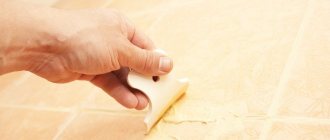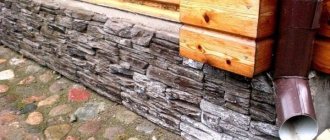Types of grout for tiles
Traditional option. This type of grout is made of cement and sand and is used most often. All thanks to the availability and low price of raw materials, as well as durability and strength. It should fill seams from three to five millimeters.
Sometimes this composition is supplemented with stabilizers and plasticizers. The latex base allows for greater moisture resistance.
Possible mistakes
The most likely violations include failure to comply with the proportions of components, choosing the wrong tool, and untimely removal of excess. The first mistake leads to a decrease in the quality of the working mass. The second mistake delays and complicates the process of filling tile joints and negatively affects the overall quality of the finishing of the facing coating. The third point is that residual plaque cannot be completely eliminated, but hardened stains will be more noticeable and are also difficult to remove later.
Cement grout for mosaic tiles
Cement grout is worth choosing because of its affordable price, ease of use, and easy removal of excess material from the mosaic.
This grout should not be used in a room with high humidity, because it is not moisture resistant enough. The texture of the grout is quite porous, dirt and dust accumulate in it.
How to care for seams: tips
The surface must be periodically cleaned of dust and other contaminants. It is necessary to remember: clean seams are the key to ensuring that harmful bacteria will not multiply on the coating. It is necessary to clean it several times a month. For these purposes, use soap solution, vinegar, citric acid or household disinfectants.
You can bleach the surface with peroxide and soda, and disinfect it with bleach. The seams can be washed with a toothbrush, and dirt can be removed and germs destroyed with a steam cleaner. If the light seams have darkened, it means that fungus has formed on them. In this case, you need to clean the old layer and treat the coating with an antiseptic, and then apply a new solution.
Epoxy grout for mosaic tiles
Another type of material has been used not so long ago, but has already become popular. Very durable and aesthetic grout. It is a two-component product, when you get started, first mix all the components with the catalyst, packaged separately.
- This speeds up the curing process and fills the joints quickly.
- The mixture itself is transparent, but you can color it or add glitter.
- This way you can experiment with interior design.
Wear-resistant and durable, perfect if the surface is exposed to intense sunlight. However, skill and experience working with such material is required to create a real masterpiece.
This grout dries instantly and hardens after fifteen to twenty minutes. The material is quite expensive, although it won’t take very long to update it. Be sure to ventilate the room well when working, otherwise poisoning may occur.
Grout, which is correctly selected according to the color scheme, will help to emphasize the beauty of the design and give it completeness.
Required tools and materials
Prepare:
- electric drill, used to mix the material (used together with the nozzle);
- rubber spatula for applying the mixture;
- 2 containers for preparing material;
- a grater with a cellulose attachment is prepared when you plan to simultaneously grout a large area of tiles;
- sponge;
- rags;
- water.
In addition, a solvent is prepared. This is a necessary measure, because the grout dries quickly, and when processing a large area, stains will remain in some places. If you plan to make seams between the tiles with a recess, prepare a former. Instead of this tool, you can use a large cross-section wire.
Grout color for mosaic tiles
To add harmony to the composition, choose a grout that is one or more shades darker than the mosaic. Light colors are not suitable for kitchen surfaces and floor coverings, because they will quickly become dirty.
Colorless epoxy grout is what is suitable if the mosaic is glass or photo panels are used. The appearance of grout should always be assessed on a small area before applying to the entire area.
Experience of generations
You can glue mosaics onto transparent grout. Transparent adhesive is ideal for mosaics made of stones and sea pebbles. This is the only mosaic, when laying it, it is necessary to apply a layer of glue greater than 2.5-5 mm, so that the glue protrudes from the seams of the mosaic and creates a feeling of “indentation” of the stones. Such a mosaic cannot be overwritten; it must be laid out correctly. We can lay out mosaics of any complexity and shape; our rich experience and huge arsenal of tools allow us to create masterpieces anywhere in the interior.
Grout shade options
There are many color options, especially for epoxy grout. The compositions can even have golden and black colors.
However, it is important to remember that grout is necessary to emphasize the advantages of the mosaic composition; this material does not play a leading role.
Recommendations for choosing colors in combination with the interior
Having decided on the question of which grout to choose for glass mosaic, ceramic or any other, use the recommendations for selecting colors:
- Light, visually uniting the tiles in some areas of the wall, will visually enlarge the room.
- A dark fugue between the belongings will emphasize the texture and color of the finish, highlighting each piece individually against the background of the overall picture.
- If several mosaic colors are combined in the cladding, it is best to choose the grout according to the color of the decorative inserts.
To make the finish more expressive, you can buy a contrasting color of the fugue in relation to the mosaic.
It’s difficult to answer unequivocally which grout to choose, the main thing is that the end result pleases you, the sealed seams look harmonious, merge and thereby complement the overall design. We hope that our advice will help you make the right decision.
Selecting grout composition
In order to correctly decide on the choice of grout for mosaics, you need to consider several points:
- Assess what type of room it is. Typically, mosaics are used in rooms where the level of humidity is high - a swimming pool or a bathroom.
- In addition, this is an excellent option for designing a fireplace, flooring, and wall decoration.
- Use mosaic elements to decorate your garden plot; bright patterns will fit perfectly into the design of paths and ponds in the garden.
- The epoxy version of the grout will protect the mosaic from the effects of fungus and moisture for a long time.
- Sand and cement grout will perfectly serve as decoration in rooms where there is an optimal level of humidity for decorating walls.
It is quite popular to use not only colored, but also transparent grout. It looks great with mosaics decorated like marble or having a mirror surface. It is important to evaluate the durability of the grout.
In this case, epoxy wins. Despite the fact that the material is expensive, it will last for several years. Pay attention to the brand name - various components can be added to different grouts.
They improve the physical and mechanical properties of the composition, working with such material becomes easier, and consumption is reduced. The ability to easily clean the mosaic surface from residues of the composition is also an important quality.
The room temperature mode affects which composition to choose. Epoxy grout is easier to use in hot weather conditions. The cement mixture is perfect for rooms with lower temperatures.
How to clean and protect tiles from fungus and dirt?
Among the protective agents for tiles and mosaics we can recommend:
- water repellents - impregnations with moisture-repellent properties that create a thin protective layer on the seams;
- polymer varnish for the space between tiles - penetrates into the depth of the grout, creating a more durable protective layer that collects drops on its surface;
- silicone or acrylic sealants - used in “problem” areas where contact with water is most likely (corner seams, areas near the sink, bathroom, plumbing fixtures).
Seams protected from moisture will not accumulate bacteria and fungus. To protect against mold, fungicides are also added to the grout, which do not give the fungus a chance to grow.
If the fungus still prevails, and unpleasant stains of dirt appear on the seams, the following will help:
- white vinegar - spray it onto the seams, leave until dry, and then remove dirt with a brush;
- hydrogen peroxide - the algorithm of use is similar to vinegar;
- tea tree oil – 1 tsp. dilute in a glass of water, spray on the seams, do not rinse;
- furatsilin – 1 tablet, dissolved in a liter of water, apply and thoroughly wash the seams;
- household chemicals – chlorine-containing and anti-mold agents such as “Isocid”, DALI, “Antifungal”, “Mill Kill”.
Read more about how to remove mold from tile joints in this article.
Grout consumption per 1m2
The consumption of materials will vary depending on mosaic parameters such as length, width, and height of the elements. Another important feature is the width of the seam running between the tiles.
- Often the packaging indicates the approximate consumption of grout.
- The entire volume of materials must be from the same production batch specified by the manufacturers.
- The qualifications of the master will determine how well and accurately the work will be done.
To carry out repair work yourself, you must have relevant experience. You can replace the damaged element yourself and repair the damaged finish after some time.
Mosaic grout has many features regarding composition, design and conditions of use. It is important to consider the functions, area of the room, as well as the style in which the interior is designed.
When choosing a more expensive epoxy grout, you can be sure that repairs will not be needed for very long. You should not choose cement grout for a room that is often exposed to water, fungus, and dust, but it will perfectly help you decorate a mosaic; you will be pleased with its affordable price and ease of use.
Application process: instructions
Work can begin after 24 hours from the date of laying the tiles. This time is enough for the glue on which the facing material was attached to completely harden. This requirement should not be neglected, otherwise moisture will destroy the mixture with which the seams are filled. The craftsmen have come up with the best method for grouting the seams on a mosaic:
- There should be no tile adhesive residue on the wall, so the surface must be treated with an acid cleaner.
- Wipe the mosaic with a sponge or terry towel.
- Mix the solution according to the instructions on the package.
- Rub the seams with the prepared mixture, moving diagonally from top to bottom. The main thing is to fill all the seams at once.
- Remove excess solution with a rubber spatula.
- After some time (usually the drying time of the mixture is 30 minutes), wash the tiles. To complete this step, you need to wipe the mosaic with a cellulose sponge to remove excess solution.
- Wait a few days. During this time, the coating must be protected from drafts, moisture, UV rays and temperature changes.
- Wipe the surface with a foam float.
To prevent cracks from forming, during the work you need to moisten the seams with water using a spray bottle.
Photo of grout for mosaic tiles
About prices
| Rub over the mosaic sheet with 4 basic colors: (we keep the sheet). | 3000 rubles |
| Grind the mosaic sheet using our grout tinting system: | 5000 rubles per sheet. |
| Cost of transparent grout: | 2000 rubles per 1 kg. |
| Consumption of transparent grout: | 1 kg per 1 square meter. |
| Acid cocktail: | 15,000 rubles for 2 liters. |
| Glowing Additive: | 6000 rubles for 1 pack. |
| The cost of grouting mosaic joints with transparent grout is: | 6000 rubles per square meter. |
| The cost of grouting tile joints with transparent grout is: | 5000 rubles per square meter. |
| Visit of a master consultant: | 3000 rubles. |
| Visit of a specialist with all samples to the site: | 7000 rubles. |
